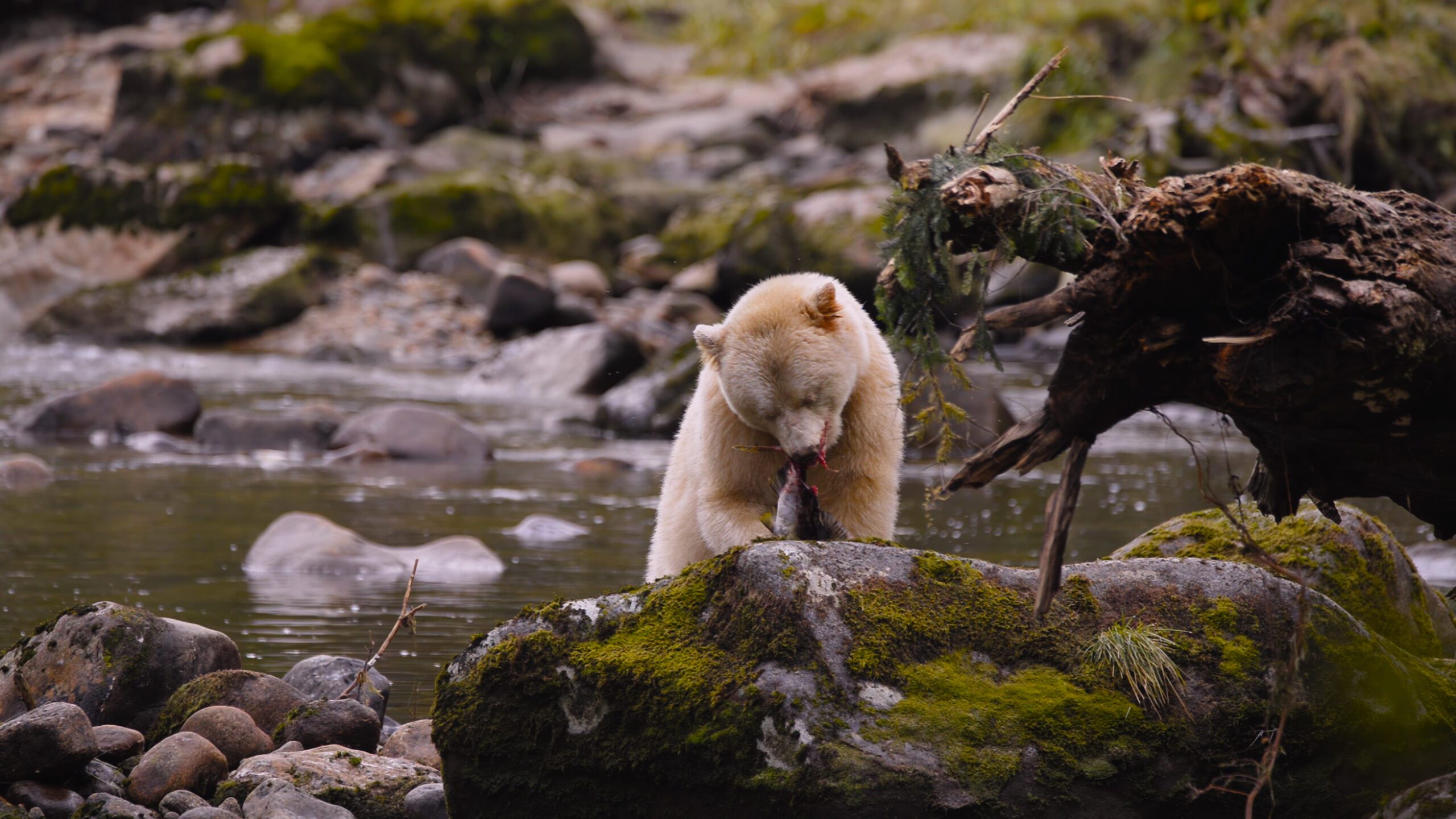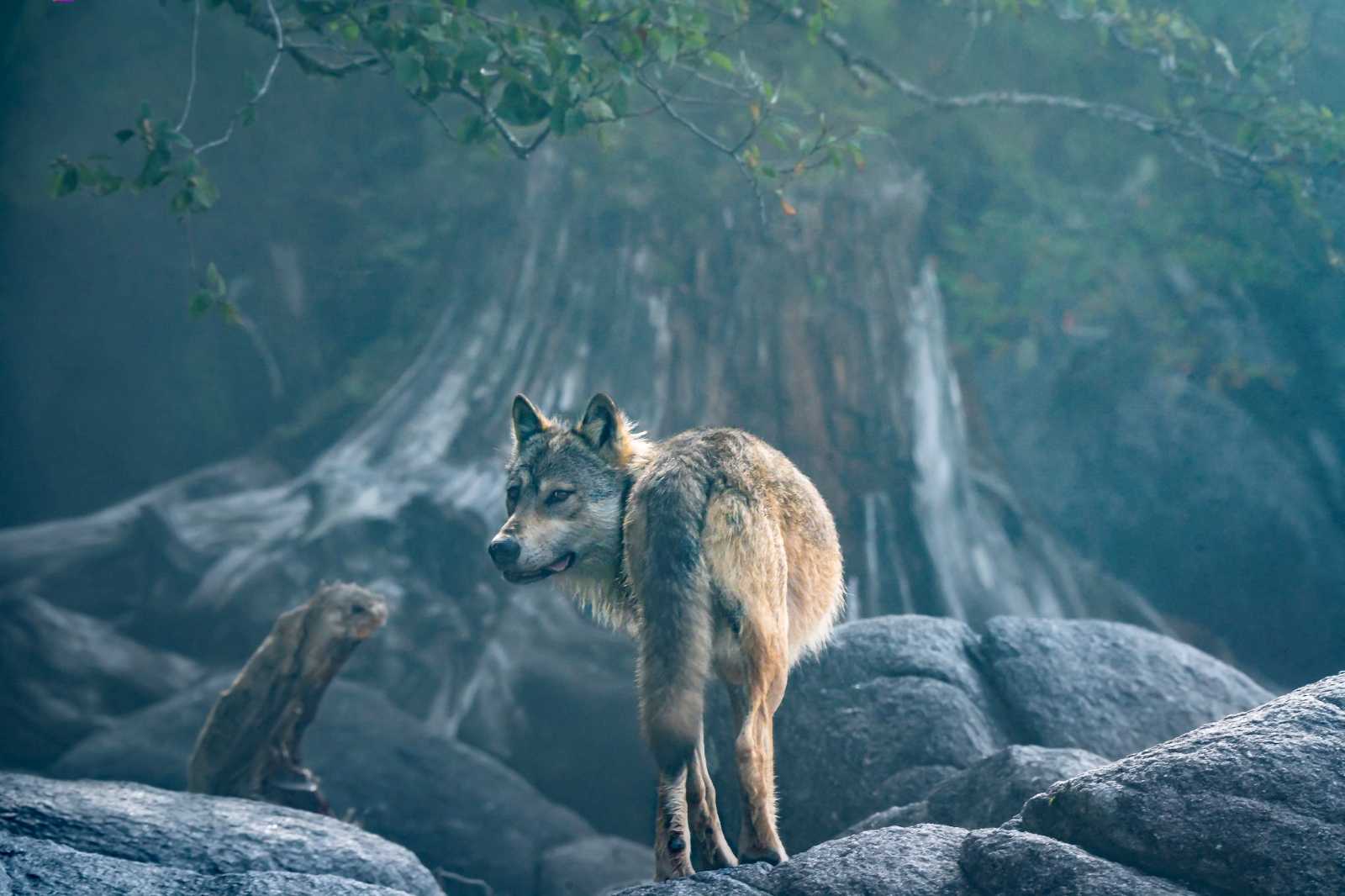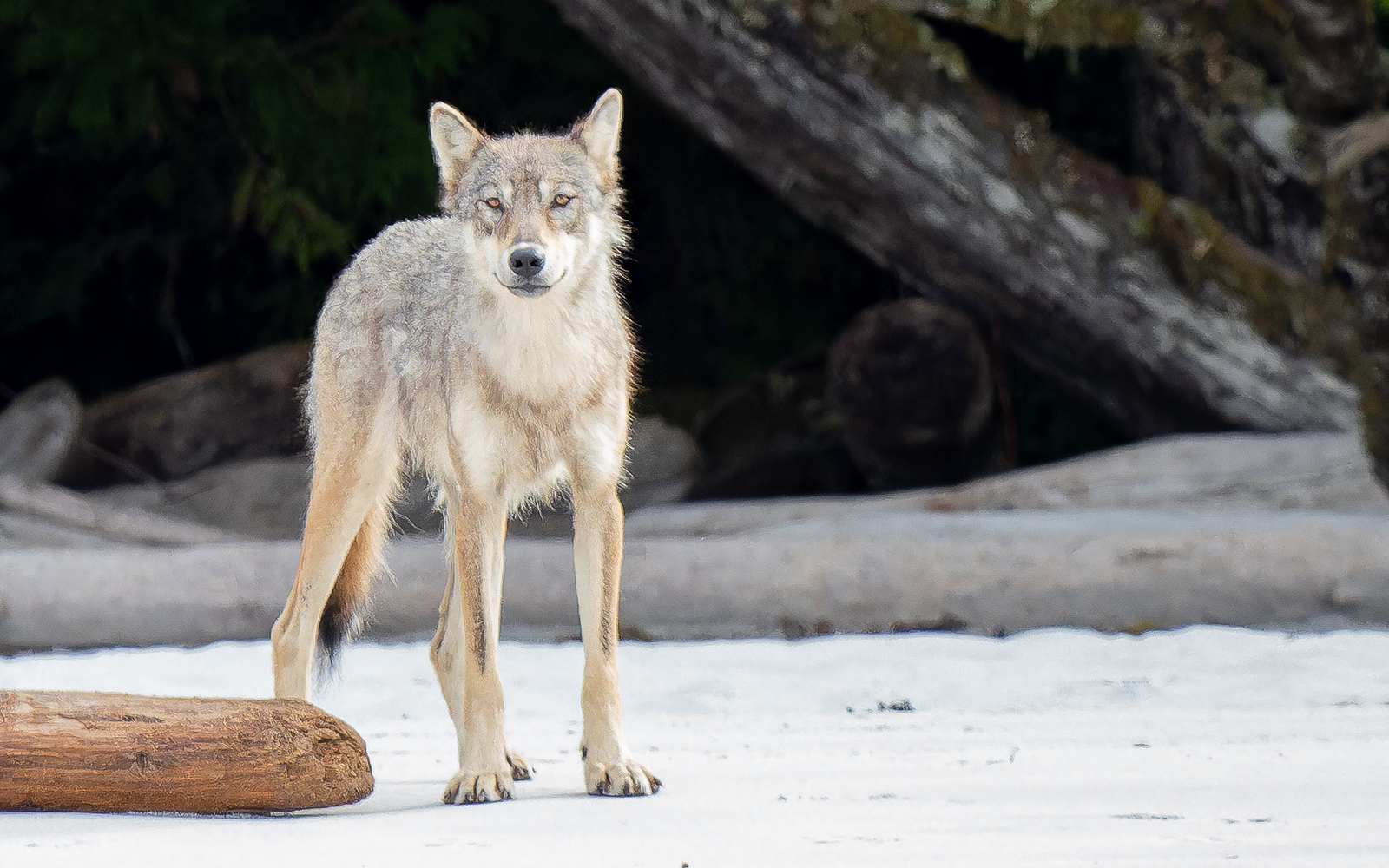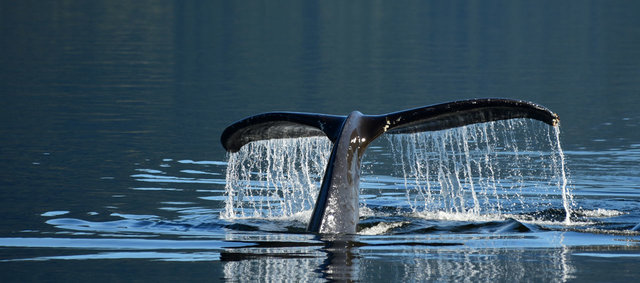You’ve heard of black bears and grizzlies. But deep in the old-growth forests of British Columbia’s central coast lives an animal more elusive than either—a bear that’s white-furred, not from albinism, but from a rare recessive gene. They are considered one of the rarest bears in the world, with an estimated population of only 300 individuals.
Where Do Spirit Bears Live?
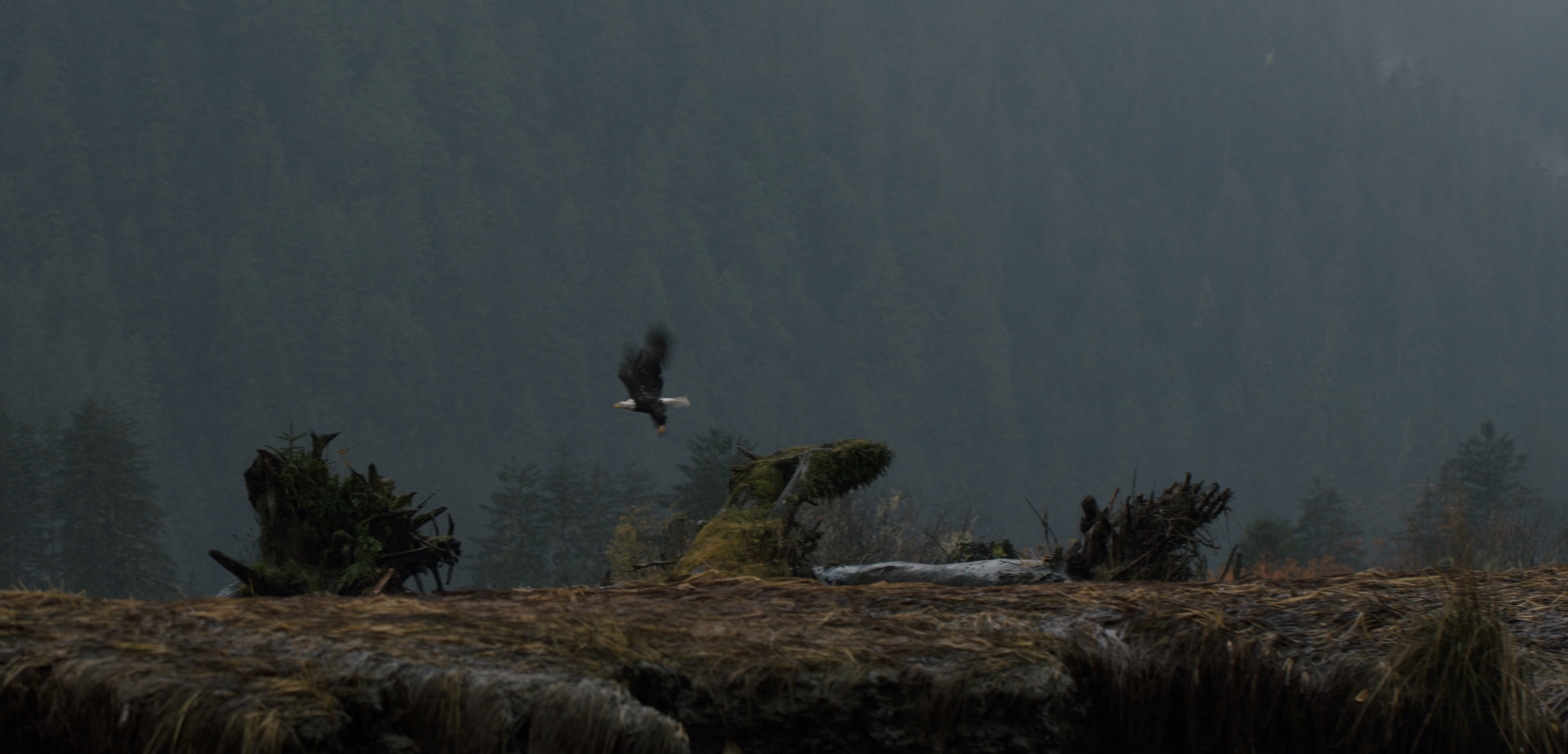
Photo: Coastline Films
The Great Bear Rainforest—a vast wilderness where land, water, and sky remain intertwined in a rhythm as old as time.
The Great Bear Rainforest
Spirit bears inhabit a portion of the Great Bear Rainforest, with the largest population concentrated in a remote coastal area where mist-shrouded islands and deep mainland inlets cradle old-growth forests. The islands in this region rise like stone citadels from the sea—steep, forested, and cut through by just a handful of salmon-bearing creeks.
Access is limited to those with permission from local Indigenous Nations. A handful of companies operate here in close partnership with these communities. Their guides—often drawing on both scientific and traditional knowledge—work hard to bring guests into places where a glimpse of a white bear might just become a memory of a lifetime.
Nass Valley
North of the Great Bear, the Nass Valley also shelters a small number of spirit bears. This area, like the Great Bear Rainforest, is remote and difficult to access without experienced guides.
How to See a Spirit Bear (Hint: Don’t Go It Alone)
The best time to spot a spirit bear is during the salmon run, from early September to mid-October. As autumn rains swell forest streams, salmon push upstream to spawn, drawing spirit bears out of the shadows to fish in narrow creeks and forested coves. Unlike grizzlies, spirit bears often avoid open estuaries and prefer smaller tributaries on secluded islands—a detail that makes knowing exactly where to look essential.
This is why guided tours aren’t just a convenience—they’re a necessity. Reaching spirit bear habitat means traveling by small aircraft and boat, navigating remote coastlines, and often entering territories where access is restricted to those with permits and local partnerships. Operators like Maple Leaf Adventures have worked in collaboration with First Nations such as the Gitga’at for decades, whose traditional knowledge and stewardship of the land are key to successful—and respectful—encounters.
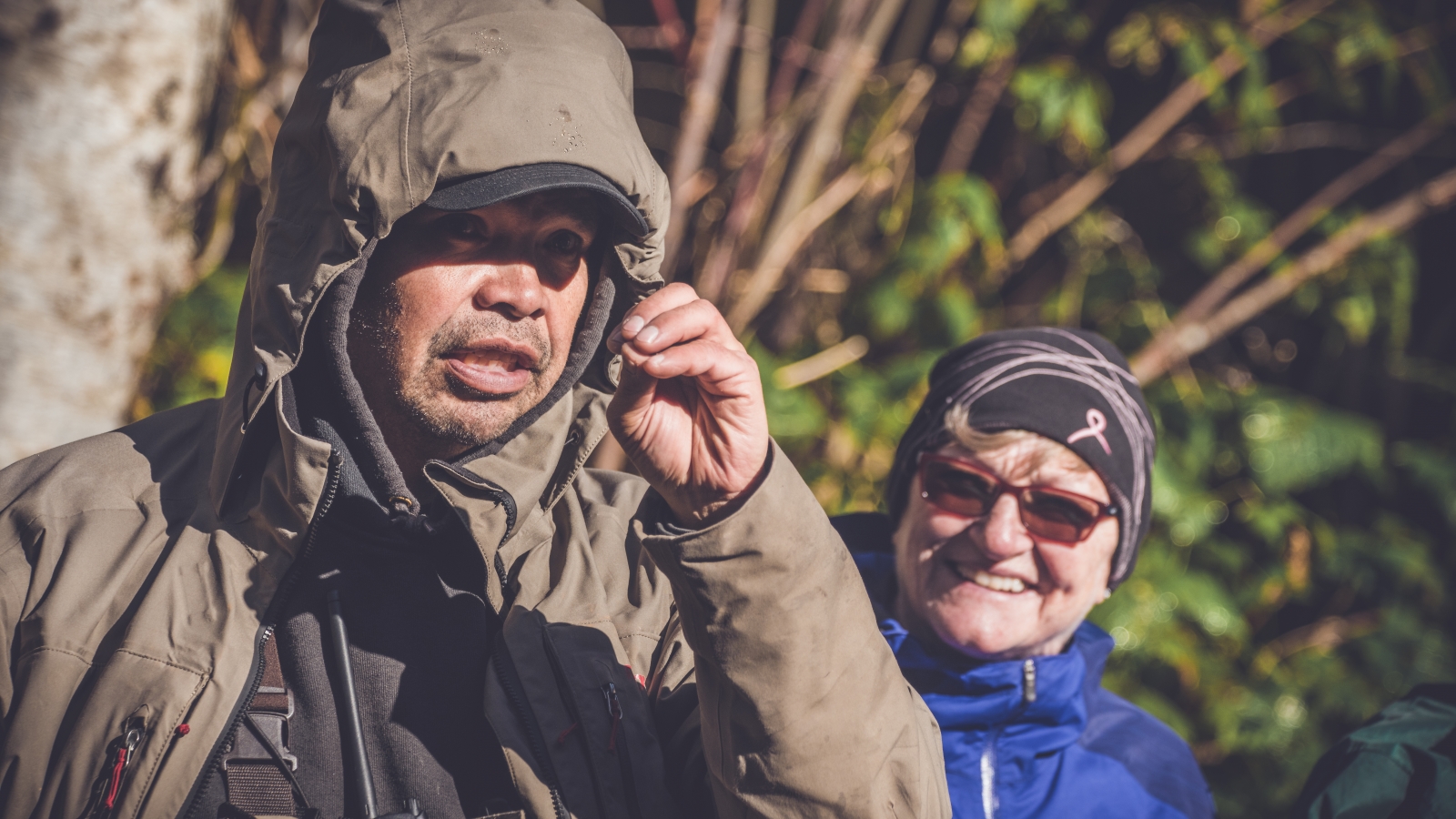
Photo: Jeff Reynolds
Gitga’at guide Marven brings deep local knowledge and quiet skill to every spirit bear tour.
Are There Spirit Bears in Vancouver or on Vancouver Island?
Nope. Tours typically begin in communities like Bella Bella or Kitimat, accessed via flights from Vancouver or Vancouver Island. From there, expedition vessels carry guests into the rainforest. Along the way, the experience often includes more than just bears: breaching humpbacks, foraging sea wolves, towering forests, and quiet anchorages under star-filled skies.
More Than a Wildlife Sighting
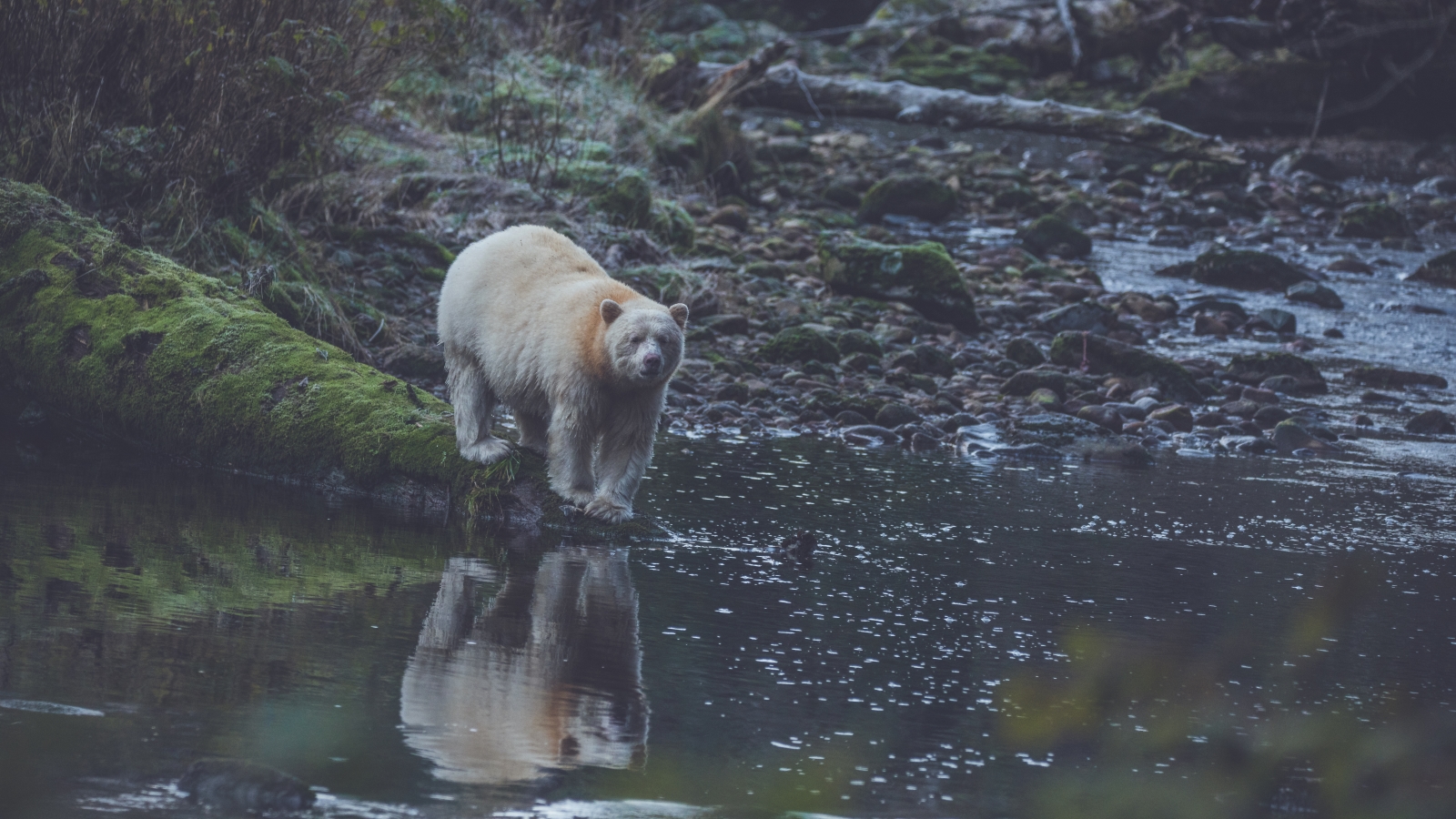
Photo: Kevin Smith
The elusive spirit bear appears like a dream at the water’s edge.
To witness a spirit bear in its natural environment is to witness something profound—not just a rare animal, but an entire living system. These bears are deeply tied to the health of the rainforest. Without strong salmon runs, they can’t thrive. Without intact forests, the salmon suffer too.
That understanding was central to the landmark Great Bear Rainforest Agreement—a conservation initiative shaped by First Nations, environmental organizations, the forest industry, government, and visionaries like Maple Leaf Adventures’ founder, Kevin Smith. It was a turning point that didn’t just preserve trees; it helped create a model where ecotourism could thrive alongside Indigenous stewardship and long-term protection.
By supporting tours that are locally led, conservation-focused, and culturally respectful, travellers help ensure the Great Bear Rainforest—and its most iconic resident—can endure. The presence of respectful visitors helps fund research, create jobs, and spread awareness of what’s at stake.
Planning Your Trip
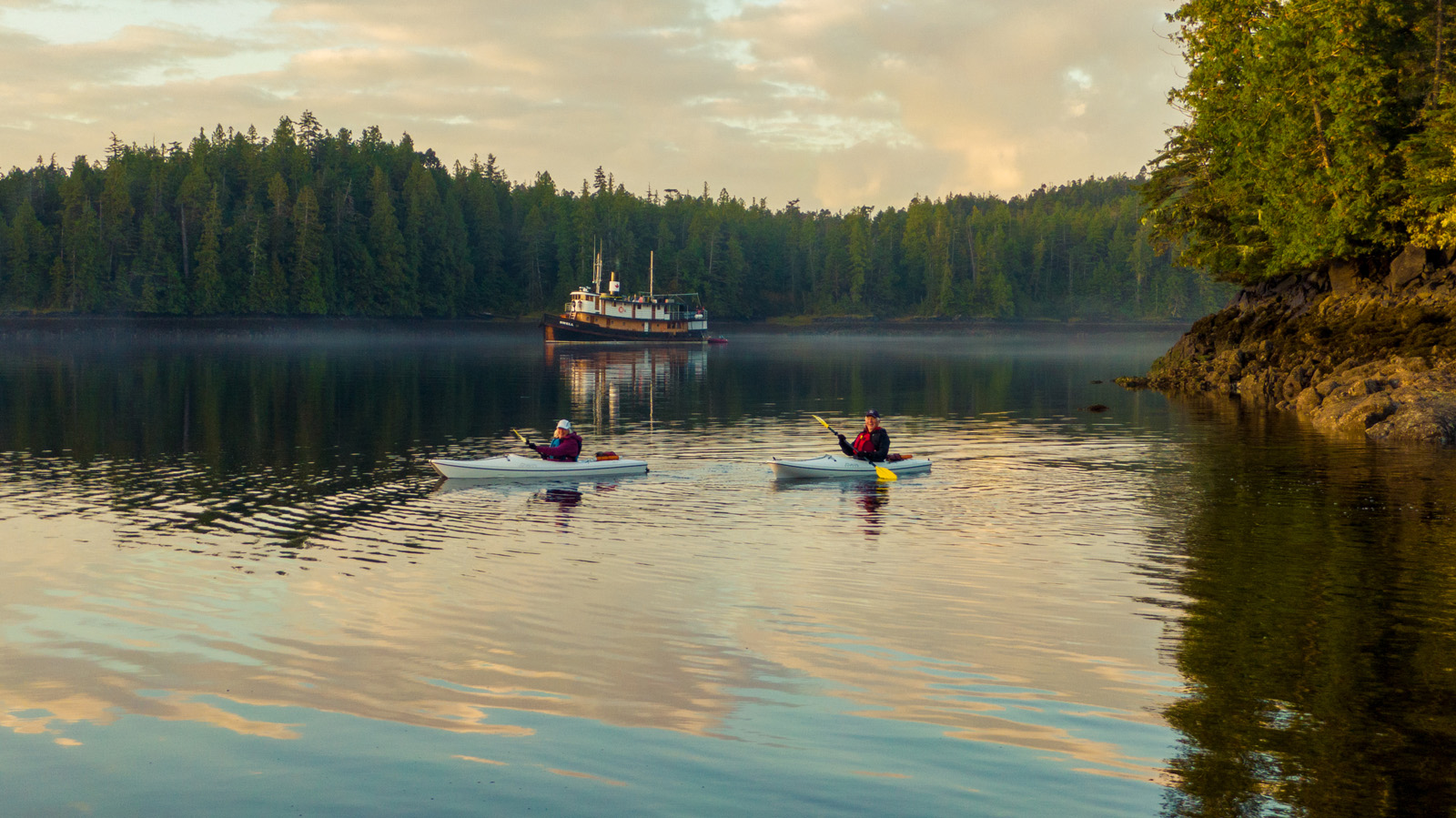
Photo: Simon Ager
Guests paddle through a tranquil inlet aboard a Great Bear Rainforest expedition in the fall.
You can’t drive to spirit bear country. Whether starting from Vancouver or northern Vancouver Island, you’ll need to fly to a coastal gateway, then join a small-group tour by water. Expect to unplug—there’s no Wi-Fi where these bears live—and pack your patience. This isn’t the kind of trip where wildlife lines up for a photo op. But it is the kind of experience that stays with you forever.
A glimpse of a spirit bear is rare. But even without one, the journey itself—into a wilderness shaped by the tides, the salmon, and the stories of its original stewards—is unforgettable.
Explore Spirit Bear Tours